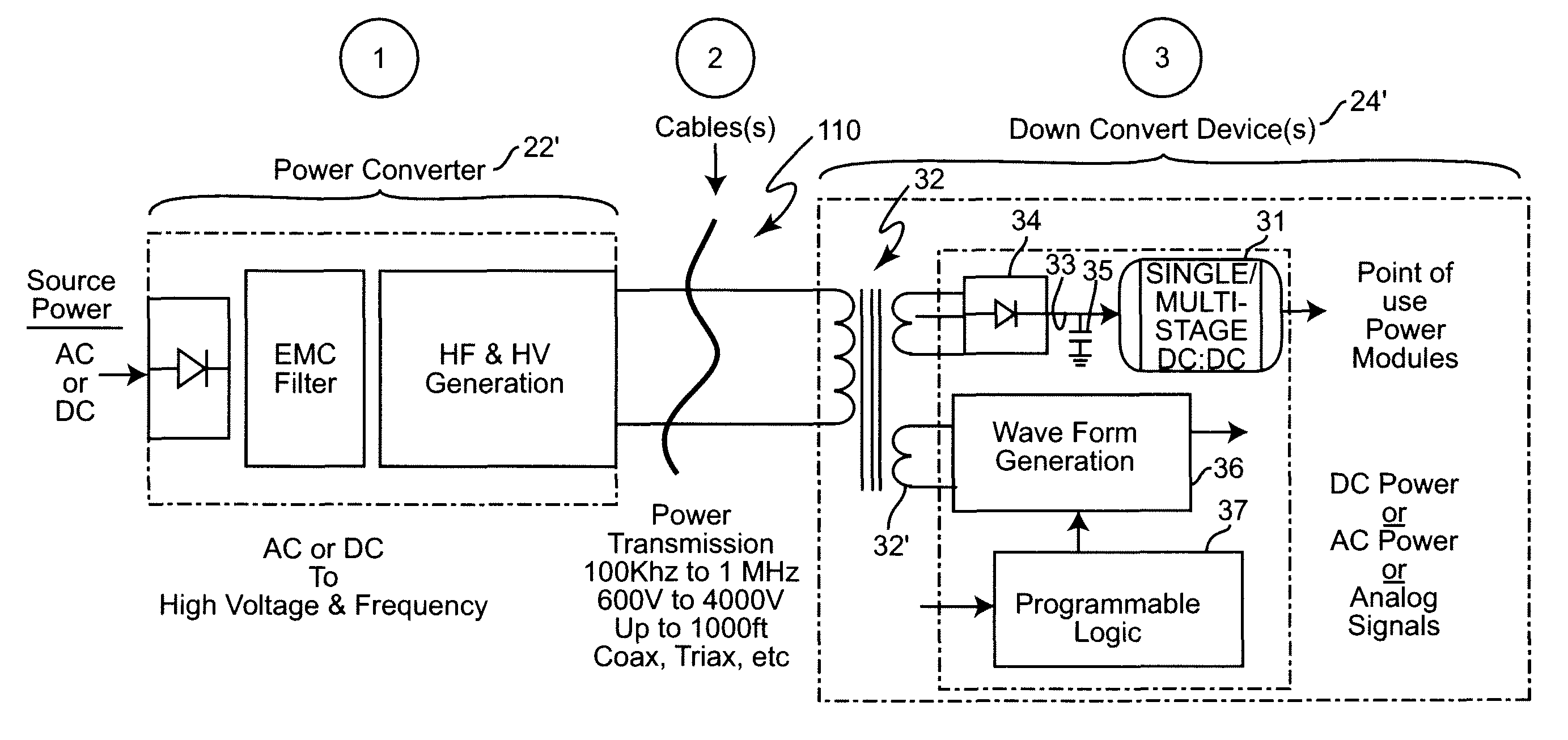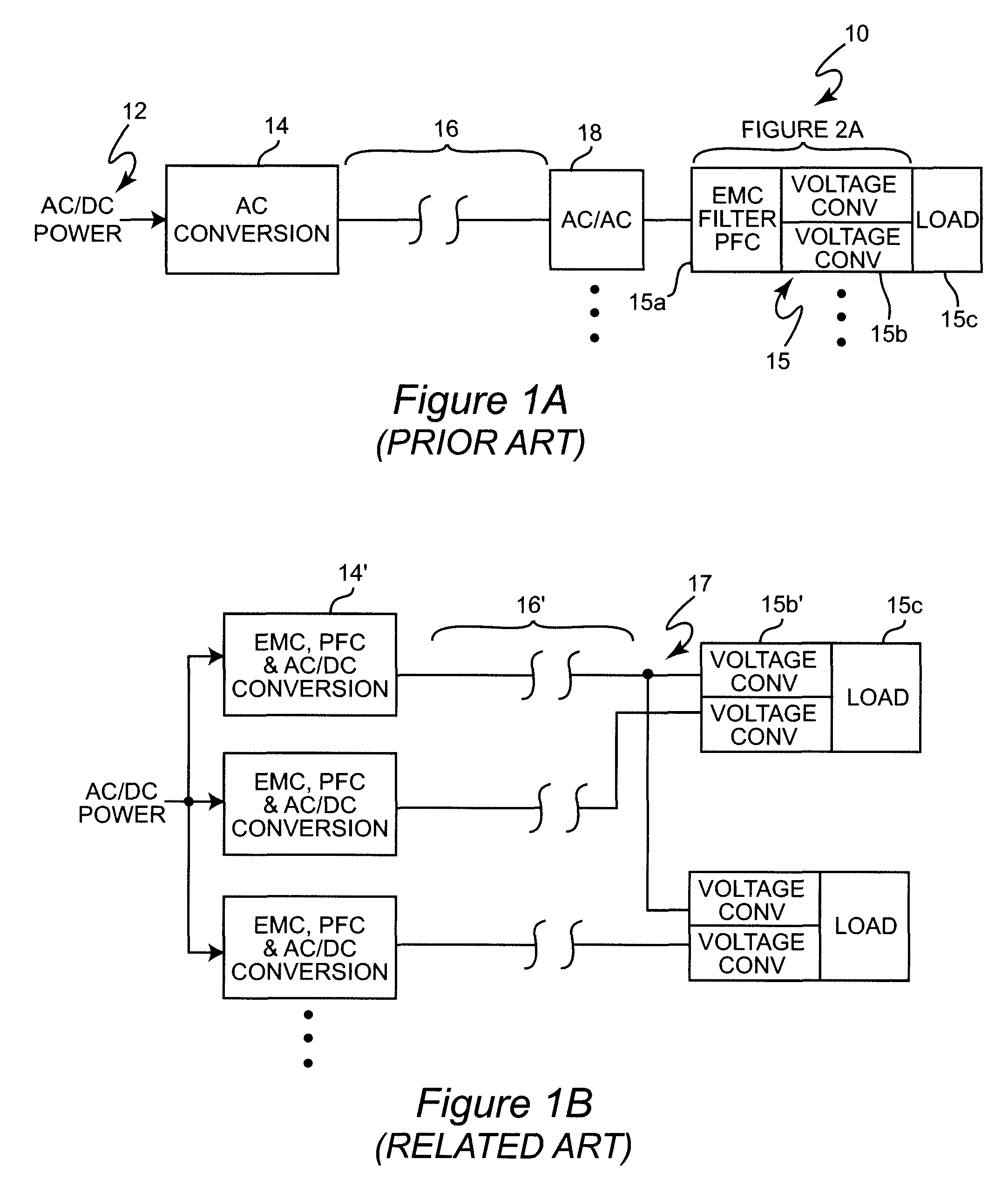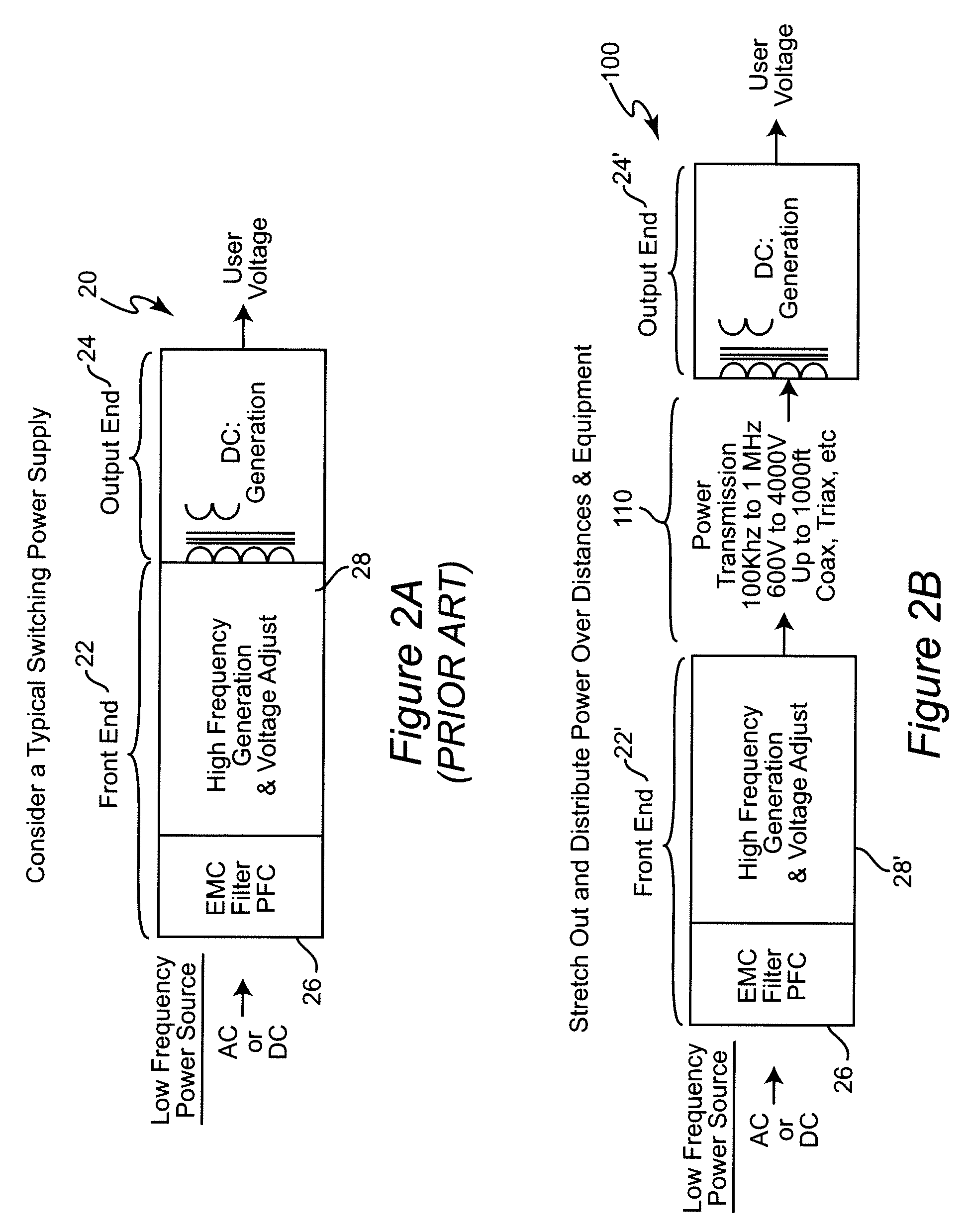High voltage and frequency distributed power system
a power system and high voltage technology, applied in the direction of dc circuit to reduce harmonics/ripples, dc circuits with intermediate conversion to dc, dc circuits with two wires, etc., can solve the problems of complex stand-by arrangements, and difficult to bring on-line quickly, so as to reduce hardware requirements and improve efficiency and controllability.
- Summary
- Abstract
- Description
- Claims
- Application Information
AI Technical Summary
Benefits of technology
Problems solved by technology
Method used
Image
Examples
Embodiment Construction
[0021]Referring now to the drawings, and more particularly to FIG. 1A, there is shown a high-level block diagram of a conventional power distribution system widely implemented at the present time. It should be understood that this basic architecture can be and is currently implemented at many levels, as alluded to above, from national or continental power grids to a residential household or even respective portions thereof and thus may vary greatly in design particulars, as will be recognized by those skilled in the art. Thus, input power could correspond to a generator at a commercial power plant or the output of a meter hub at a building or dwelling. AC conversion 14 may be sequentially provided at a variety of locations depending on applications and most particularly in consideration of the distance over which power is to be carried by cable 16. Similarly AC / AC conversion 18 may be provided sequentially several times to isolate or step the voltage down to some standard level such...
PUM
 Login to View More
Login to View More Abstract
Description
Claims
Application Information
 Login to View More
Login to View More - R&D
- Intellectual Property
- Life Sciences
- Materials
- Tech Scout
- Unparalleled Data Quality
- Higher Quality Content
- 60% Fewer Hallucinations
Browse by: Latest US Patents, China's latest patents, Technical Efficacy Thesaurus, Application Domain, Technology Topic, Popular Technical Reports.
© 2025 PatSnap. All rights reserved.Legal|Privacy policy|Modern Slavery Act Transparency Statement|Sitemap|About US| Contact US: help@patsnap.com



